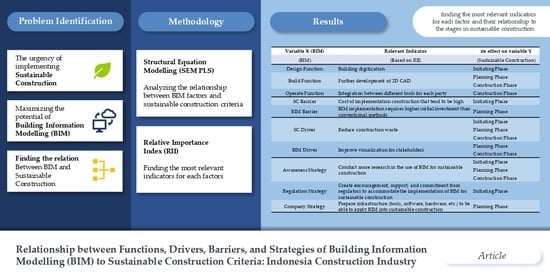Relationship between Functions, Drivers, Barriers, and Strategies of Building Information Modelling (BIM) and Sustainable Construction Criteria: Indonesia Construction Industry
Abstract
:1. Introduction
1.1. Background
- Process efficiency: the capacity of BIM to integrate all parties engaged in a project in order to facilitate information sharing and decision-making throughout the project life cycle [12];
- Communication effectiveness: BIM’s capacity to provide a simpler communication system and flow between parties [13];
- Efficiency in monitoring project progress: the capacity of BIM to allow direct visual monitoring of what has been completed and what remains to be completed [12];
- Improved construction planning: BIM simplifies the planning stage of a project’s life cycle due to the concept of visualization of the project’s activities and execution [14].
1.2. Problem Identification
1.2.1. The Urgency of Implementing Sustainable Construction
1.2.2. Maximizing the Potential of Building Information Modelling (BIM)
1.3. Research Questions
- Analyzing the relationship between BIM functions and sustainable construction criteria;
- Analyzing the relationship between barrier factors in the application of BIM in sustainable construction and sustainable construction criteria;
- Analyzing the relationship between the driving factors for the application of BIM in sustainable construction and sustainable construction criteria;
- Analyzing the relationship between strategies for improving the application of BIM in sustainable construction and sustainable construction criteria.
1.4. Limitations of The Research
- The construction service players in Indonesia are the subjects for this study;
- The construction service players are drawn from institutions/organizations that have implemented or are using BIM technology and sustainable construction in their workflows;
- The construction service players are from companies/institutions that are willing and competent to abide by Indonesia’s Ministry of Public Works and Public Housing Regulation number 9 of 2021;
- Structural equation modelling is used for the analysis process.
- The criteria for sustainable construction employed are based on Indonesia’s Ministry of Public Works and Public Housing Regulation number 9 of 2021, which covers the standards for implementing sustainable construction in Indonesia.
1.5. Functions of BIM for Sustainable Construction
1.6. Barriers to BIM Implementation
1.7. Drivers of BIM Implementation
1.8. BIM Implementation Strategies
2. Materials and Methods
2.1. Research Methods
2.2. Research Variables
2.3. Respondent Criteria
2.3.1. Respondent Criteria for Expert Validation
- For experts from the practitioner field, the minimum required education level is Bachelor/Equivalent, a minimum required work experience of at least 15 years in the construction field, and experience implementing sustainable construction or BIM in past workflows;
- For experts from academia, the minimum required education level is Bachelor/Equivalent with at least 15 years of teaching experience and an understanding of sustainable construction or BIM.
2.3.2. Respondent Criteria for Pilot Survey
- Respondents must have a Bachelor’s degree or equivalent at minimum;
- Respondents must have at least 1 year of working experience in the construction field;
- Respondents must have implemented or must be currently implementing sustainable construction or BIM in their workflows.
2.3.3. Respondent Criteria for Research Questions
- Respondents must have Bachelor’s degree or equivalent at minimum;
- Respondents must have at least 1 year of working experience in the construction field;
- Respondents must have implemented or must currently be implementing sustainable construction or BIM in their workflows.
2.4. Research Analysis Method
2.4.1. Data Analysis for Expert Validation
2.4.2. Data Analysis for Pilot Survey
2.4.3. Data Analysis for Structural Equation Modelling (SEM)
- Coefficient of determination (R2)The coefficient of determination (R2) describes the degree of explained variance of the dependent latent variable. It is used to determine the explanatory power of the structural model [57]. R2 must be met, where values between 0.02 and 0.12 are considered weak, values between 0.13 and 0.25 are considered moderate, and values of 0.26 and greater are considered substantial;
- Path coefficientThe second criterion for SEM evaluation involves assessing the path coefficient; it measures the strength of the relationship between the latent variables of the research model, where the significant value should be at least 0.05 [58];
- Effect size (F2)The F2 effect size is a measure of the impact of a particular predictor construct on an endogenous construct. In addition to assessing the size of the R2 values of all endogenous constructs, the F2 effect size can also be calculated for each construct. An F2 effect size of 0.02 is considered small; 0.15, moderate; and 0.35, strong [57].
2.4.4. Data Analysis for Relative Importance Index (RII)
- RII: Relative Importance Index,
- W: The weighting given to each factor,
- A: The highest weight present in the research data, and
- N: Total respondents who filled in the data
3. Results
3.1. Respondent Profile
3.2. Research Results
3.2.1. Results of Structural Equation Modelling Testing
- Model Validity
- 2.
- Model Reliability
- 3.
- Structural Test—R2
- 4.
- Predictive Relevance Test—Q2
- 5.
- Model Fit Test
- 6.
- Path Coefficient
3.2.2. Results of Relative Importance Index Testing
3.3. Research Findings
4. Discussion
5. Conclusions
Author Contributions
Funding
Institutional Review Board Statement
Informed Consent Statement
Data Availability Statement
Conflicts of Interest
References
- Borowy, I. Defining Sustainable Development for Our Common Future: A History of the World Commission on Environment and Development (Brundtland Commission), 1st ed.; Routledge: London, UK, 2013. [Google Scholar] [CrossRef]
- Purvis, B.; Mao, Y.; Robinson, D. Three pillars of sustainability: In search of conceptual origins. Sustain. Sci. 2018, 14, 681–695. [Google Scholar] [CrossRef] [Green Version]
- Sandanayake, M.; Zhang, G.; Setunge, S. Environmental emissions at foundation construction stage of buildings—Two case studies. Build. Environ. 2016, 95, 189–198. [Google Scholar] [CrossRef]
- Zuo, J.; Zhao, Z.-Y. Green building research–current status and future agenda: A review. Renew. Sustain. Energy Rev. 2014, 30, 271–281. [Google Scholar] [CrossRef]
- Hussin, J.; Rahman, I.A.; Memon, A.H. The Way Forward in Sustainable Construction: Issues and Challenges. Int. J. Adv. Appl. Sci. 2013, 2, 15–24. [Google Scholar] [CrossRef]
- Eren, F. Does the Asian property market work for sustainable urban developments? In Sustainable Cities in Asia; Caprotti, F., Yu, L., Eds.; Routledge: London, UK, 2018; pp. 32–47. [Google Scholar] [CrossRef]
- Zolfani, S.H.; Pourhossein, M.; Yazdani, M.; Zavadskas, E.K. Evaluating construction projects of hotels based on environmental sustainability with MCDM framework. Alex. Eng. J. 2018, 57, 357–365. [Google Scholar] [CrossRef]
- Kibert, C.J. Sustainable Construction: Green Building Design and Delivery, 3rd ed.; Wiley: Oxford, UK, 2012. [Google Scholar]
- Migilinskas, D.; Popov, V.; Juocevicius, V.; Ustinovichius, L. The Benefits, Obstacles and Problems of Practical Bim Implementation. Procedia Eng. 2013, 57, 767–774. [Google Scholar] [CrossRef] [Green Version]
- Autodesk. What Is BIM|Building Information Modeling|Autodesk. 2021. Available online: https://www.autodesk.com/industry/aec/bim (accessed on 11 February 2022).
- Diaz, P. Analysis of Benefits, Advantages and Challenges of Building Information Modelling in Construction Industry. J. Adv. Civ. Eng. 2016, 2, 1–11. [Google Scholar] [CrossRef]
- Hamid, A.B.A.; Taib, M.Z.M.; Razak, A.H.N.A.; Embi, M.R. Building Information Modelling: Challenges and Barriers in Implement of BIM for Interior Design Industry in Malaysia. IOP Conf. Ser. Earth Environ. Sci. 2018, 140, 012002. [Google Scholar] [CrossRef]
- Gamil, Y.; Rahman, I.A.R. Awareness and challenges of building information modelling (BIM) implementation in the Yemen construction industry. J. Eng. Des. Technol. 2019, 17, 1077–1084. [Google Scholar] [CrossRef]
- Rogers, J.; Chong, H.-Y.; Preece, C. Christopher, Adoption of Building Information Modelling technology (BIM): Perspectivesfrom Malaysian engineering con-sulting services firms. Eng. Constr. Arch. Manag. 2015, 22, 424–445. [Google Scholar] [CrossRef]
- Chong, H.-Y.; Wang, J.; Shou, W.; Wang, X.; Guo, J. Improving Quality and Performance of Facility Management Using Building Information Modelling; Springer Science and Business Media LLC: Berlin/Heidelberg, Germany, 2014. [Google Scholar]
- Mohammed, A.B. Applying BIM to achieve sustainability throughout a building life cycle towards a sustainable BIM model. Int. J. Constr. Manag. 2019, 22, 148–165. [Google Scholar] [CrossRef]
- Sopaheluwakan, M.P.; Adi, T.J.W. Adoption and implementation of building information modeling (BIM) by the government in the Indonesian construction industry. IOP Conf. Ser. Mater. Sci. Eng. 2020, 930, 012020. [Google Scholar] [CrossRef]
- Hatmoko, J.U.D.; Fundra, Y.; Wibowo, M.A.; Zhabrinna. Investigating Building Information Modelling (BIM) Adoption in Indonesia Construction Industry. MATEC Web Conf. 2019, 258, 02006. [Google Scholar] [CrossRef]
- Elhendawi, A.; Omar, H.; Elbeltagi, E.; Smith, A. Practical approach for paving the way to motivate BIM non-users to adopt BIM. Int. J. BIM Eng. Sci. 2019, 2, 1–22. [Google Scholar] [CrossRef]
- Alyami, A.; Sanni-Anibire, M.O. BIM in the Saudi Arabian construction industry: State of the art, benefit and barriers. Int. J. Build. Pathol. Adapt. 2019, 39, 33–47. [Google Scholar] [CrossRef]
- Yudelson, J. Green Building A to Z: Understanding the Language of Green Building; New Society Publishers: London, UK, 2007. [Google Scholar]
- Manzoor, B.; Othman, I.; Gardezi, S.; Harirchian, E. Strategies for Adopting Building Information Modeling (BIM) in Sustainable Building Projects—A Case of Malaysia. Buildings 2021, 11, 249. [Google Scholar] [CrossRef]
- Balaban, O.; de Oliveira, J.A.P. Sustainable buildings for healthier cities: Assessing the co-benefits of green buildings in Japan. J. Clean. Prod. 2017, 163, S68–S78. [Google Scholar] [CrossRef]
- Antón, L.Á.; Díaz, J. Integration of LCA and BIM for Sustainable Construction. Int. J. Environ. Eng. 2014, 8, 1378–1382. [Google Scholar]
- Ahmadian, F.F.A.; Rashidi, T.H.; Akbarnezhad, A.; Waller, S.T. BIM-enabled sustainability assessment of material supply decisions. Eng. Constr. Arch. Manag. 2017, 24, 668–695. [Google Scholar] [CrossRef]
- Abanda, F.H.; Vidalakis, C.; Oti, A.H.; Tah, J.H. A critical analysis of Building Information Modelling systems used in construction projects. Adv. Eng. Softw. 2015, 90, 183–201. [Google Scholar] [CrossRef]
- Chong, H.-Y.; Wang, X. The outlook of building information modeling for sustainable development. Clean Technol. Environ. Policy 2016, 18, 1877–1887. [Google Scholar] [CrossRef] [Green Version]
- Chen, Y.; Huang, D.; Liu, Z.; Osmani, M.; Demian, P. Construction 4.0, Industry 4.0, and Building Information Modeling (BIM) for Sustainable Building Development within the Smart City. Sustainability 2022, 14, 10028. [Google Scholar] [CrossRef]
- Al-Ashmori, Y.Y.; Othman, I.; Rahmawati, Y.; Amran, Y.H.M.; Sabah, S.H.A.; Rafindadi, A.D.; Mikić, M. BIM benefits and its influence on the BIM implementation in Malaysia. Ain Shams Eng. J. 2020, 11, 1013–1019. [Google Scholar] [CrossRef]
- Charef, R.; Alaka, H.; Emmitt, S. Beyond the third dimension of BIM: A systematic review of literature and assessment of professional views. J. Build. Eng. 2018, 19, 242–257. [Google Scholar] [CrossRef]
- Yan, W.; Culp, C.; Graf, R. Integrating BIM and gaming for real-time interactive architectural visualization. Autom. Constr. 2011, 20, 446–458. [Google Scholar] [CrossRef]
- Haron, A.T.; Marshall-Ponting, A.J.; Aouad, G.F. Building Information Modelling in integrated practice. In Proceedings of the 2nd Construction Industry Research Achievement International Conference (CIRIAC 2009), Kuala Lumpur, Malaysia, 3–5 November 2009. [Google Scholar]
- Sattineni, A.; Mead, K. Coordination Guidelines for Virtual Design and Construction. In Proceedings of the 30th International Symposium on Automation and Robotics in Construction and Mining (ISARC 2013), Montreal, QC, Canada, 11–15 August 2013; pp. 1491–1499. [Google Scholar] [CrossRef] [Green Version]
- Zhang, J.; Hu, Z. BIM- and 4D-based integrated solution of analysis and management for conflicts and structural safety problems during construction: 1. Principles and methodologies. Autom. Constr. 2011, 20, 155–166. [Google Scholar] [CrossRef]
- Agirachman, F.A.; Putra, I.F.; Angkawijaya, A. Initial Study on Building Information Modeling Adoption Urgency for Architecture Engineering and Construction Industry in Indonesia. MATEC Web Conf. 2018, 147, 6002. [Google Scholar] [CrossRef] [Green Version]
- Sriyolja, Z.; Harwin, N.; Yahya, K. Barriers to Implement Building Information Modeling (BIM) in Construction Industry: A Critical Review. In Proceedings of the IOP Conference Series: Earth and Environmental Science, Indonesia, 10 November 2020; p. 738. [Google Scholar] [CrossRef]
- Verbeeck, G.; Hens, H. Life cycle inventory of buildings: A calculation method. Build. Environ. 2010, 45, 1037–1041. [Google Scholar] [CrossRef]
- Fadeyi, M.O. The role of building information modeling (BIM) in delivering the sustainable building value. Int. J. Sustain. Built Environ. 2017, 6, 711–722. [Google Scholar] [CrossRef]
- Raouf, A.M.I.; Al-Ghamdi, S.G. Building information modelling and green buildings: Challenges and opportunities. Arch. Eng. Des. Manag. 2019, 15, 1–28. [Google Scholar] [CrossRef]
- Walasek, D.; Barszcz, A. Analysis of the Adoption Rate of Building Information Modeling [BIM] and its Return on Investment [ROI]. Procedia Eng. 2017, 172, 1227–1234. [Google Scholar] [CrossRef]
- Ghaffarianhoseini, A.; Tookey, J.; Ghaffarianhoseini, A.; Naismith, N.; Azhar, S.; Efimova, O.; Raahemifar, K. Building Information Modelling (BIM) uptake: Clear benefits, understanding its implementation, risks and challenges. Renew. Sustain. Energy Rev. 2017, 75, 1046–1053. [Google Scholar] [CrossRef]
- López, F.J.; Lerones, P.M.; Llamas, J.; Gómez-García-Bermejo, J.; Zalama, E. A review of heritage building information modeling (H-BIM). Multimodal Technol. Interact. 2018, 2, 21. [Google Scholar] [CrossRef] [Green Version]
- Olawumi, T.O.; Chan, D.W.M. Green-building information modelling (Green-BIM) assessment framework for evaluating sustainability performance of building projects: A case of Nigeria. Arch. Eng. Des. Manag. 2020, 17, 458–477. [Google Scholar] [CrossRef]
- Serpell, A.; Kort, J.; Vera, S. Awareness, actions, drivers and barriers of sustainable construction in Chile. Technol. Econ. Dev. Econ. 2013, 19, 272–288. [Google Scholar] [CrossRef] [Green Version]
- Tokbolat, S.; Karaca, F.; Durdyev, S.; Calay, R.K. Construction professionals’ perspectives on drivers and barriers of sustainable construction. Environ. Dev. Sustain. 2019, 22, 4361–4378. [Google Scholar] [CrossRef] [Green Version]
- AlSanad, S. Awareness, Drivers, Actions, and Barriers of Sustainable Construction in Kuwait. Procedia Eng. 2015, 118, 969–983. [Google Scholar] [CrossRef] [Green Version]
- Durdyev, S.; Zavadskas, E.K.; Thurnell, D.; Banaitis, A.; Ihtiyar, A. Sustainable Construction Industry in Cambodia: Awareness, Drivers and Barriers. Sustainability 2018, 10, 392. [Google Scholar] [CrossRef] [Green Version]
- Gunarathne, A.S.; Zainudeen, N.; Perera, C.S.R.; Perera, B.A.K.S. A framework of an integrated sustainability and value engineering concepts for construction projects. Int. J. Constr. Manag. 2020, 22, 2178–2190. [Google Scholar] [CrossRef]
- Ilhan, B.; Yaman, H. Green building assessment tool (GBAT) for integrated BIM-based design decisions. Autom. Constr. 2016, 70, 26–37. [Google Scholar] [CrossRef]
- PUPR, Permen PUPR No. 9 Tahun 2021: Pedoman Penyelenggaraan Konstruksi Berkelanjutan, vol. 2021. Available online: https://peraturan.bpk.go.id/Home/Details/216870/permen-pupr-no-9-tahun-2021 (accessed on 17 February 2023).
- Chin, W.W. Partial least squares for IS researchers: An overview and presentation of recent advances using the PLS approach. In Proceedings of the Twenty First International Conference on Information Systems, Brisbane, Australia, 10–13 December 2000. [Google Scholar]
- Galanis, P. The Delphi method. Arch. Hell. Med. 2018, 35, 564–570. [Google Scholar] [CrossRef]
- Van Teijlingen, E.R.; Hundley, V. The Importance of Pilot Studies. Nurs. Stand. 2002, 16, 33–36. [Google Scholar] [CrossRef] [PubMed] [Green Version]
- Hair, J.F.; Ringle, C.M.; Sarstedt, M. PLS-SEM: Indeed a Silver Bullet. J. Mark. Theory Pract. 2011, 19, 139–152. [Google Scholar] [CrossRef]
- Solla, M.; Ismail, L.H.; Shaarani, A.S.; Milad, A. Measuring the feasibility of using of BIM application to facilitate GBI assessment process. J. Build. Eng. 2019, 25, 100821. [Google Scholar] [CrossRef]
- Wong, K.K.K. Partial least squares structural equation modeling (PLS-SEM) techniques using SmartPLS. Market Bull. 2013, 24, 1–32. [Google Scholar]
- Ringle, C.M.; Silva, D.; Bido, D.D.S. Structural Equation Modeling with the Smartpls. Rev. Bras. Mark. 2014, 13, 56–73. [Google Scholar] [CrossRef]
- Urbach, N.; Ahlemann, F. Structural equation modeling in information systems research using partial least squares. J. Inf. Technol. Theory Appl. (JITTA) 2010, 11, 2. [Google Scholar]
- Azman, N.S.; Ramli, M.Z.; Razman, R.; Zawawi, M.H.; Ismail, I.N.; Isa, M.R. Relative importance index (RII) in ranking of quality factors on industrialised building system (IBS) projects in Malaysia. AIP Conf. Proc. 2019, 2019, 020029. [Google Scholar] [CrossRef]
- Russo, D.; Stol, K.-J. PLS-SEM for Software Engineering Research. ACM Comput. Surv. 2021, 54, 1–38. [Google Scholar] [CrossRef]
- Hair, J.F., Jr.; Hult, G.T.M.; Ringle, C.M.; Sarstedt, M. A Primer on Partial Least Squares Structural Equation Modeling (PLS-SEM); Sage Publications: Thousand Oaks, CA, USA, 2021. [Google Scholar]
- Hair, J.F.; Hult GT, M.; Ringle, C.M.; Sarstedt, M.; Danks, N.P.; Ray, S. Partial Least Squares Structural Equation Modeling (PLS-SEM) Using R; Springer International Publishing: Cham, Switzerland, 2021. [Google Scholar] [CrossRef]
- Chin, W.W. The partial least squares approach to structural equation modeling. In Modern Methods for Business Research; Lawrence Erlbaum Associates: Mahwah, NJ, USA, 1998; pp. 295–336. [Google Scholar]
- Lohmöller, J.B. Latent Variable Path Modeling with Partial Least Squares; Springer Science & Business Media: Heidelberg/Berlin, Germany, 1989. [Google Scholar] [CrossRef]
- Hu, L.T.; Bentler, P.M. Cutoff criteria for fit indexes in covariance structure analysis: Conventional criteria versus new alternatives. Struct. Equ. Model. Miltidiscip. J. 1999, 6, 1–55. [Google Scholar] [CrossRef]
- Henseler, J.; Ringle, C.M.; Sarstedt, M. A new criterion for assessing discriminant validity in variance-based structural equation modeling. J. Acad. Mark. Sci. 2015, 43, 115–135. [Google Scholar] [CrossRef] [Green Version]
- Zhou, L.; Lowe, D.J. Economic Challenge of Sustainable Construction. In Proceedings of the RICS COBRA foundation construction and building research conference, Wolverhampton, UK, 1–2 September 2003. [Google Scholar]
- Haron, N.A.; Raja Soh, R.P.Z.A.; Harun, A.N. Implementation of Building Information Modelling (BIM) in Malaysia: A Review. Pertanika J. Sci. Technol. 2017, 25, 661–674. [Google Scholar]
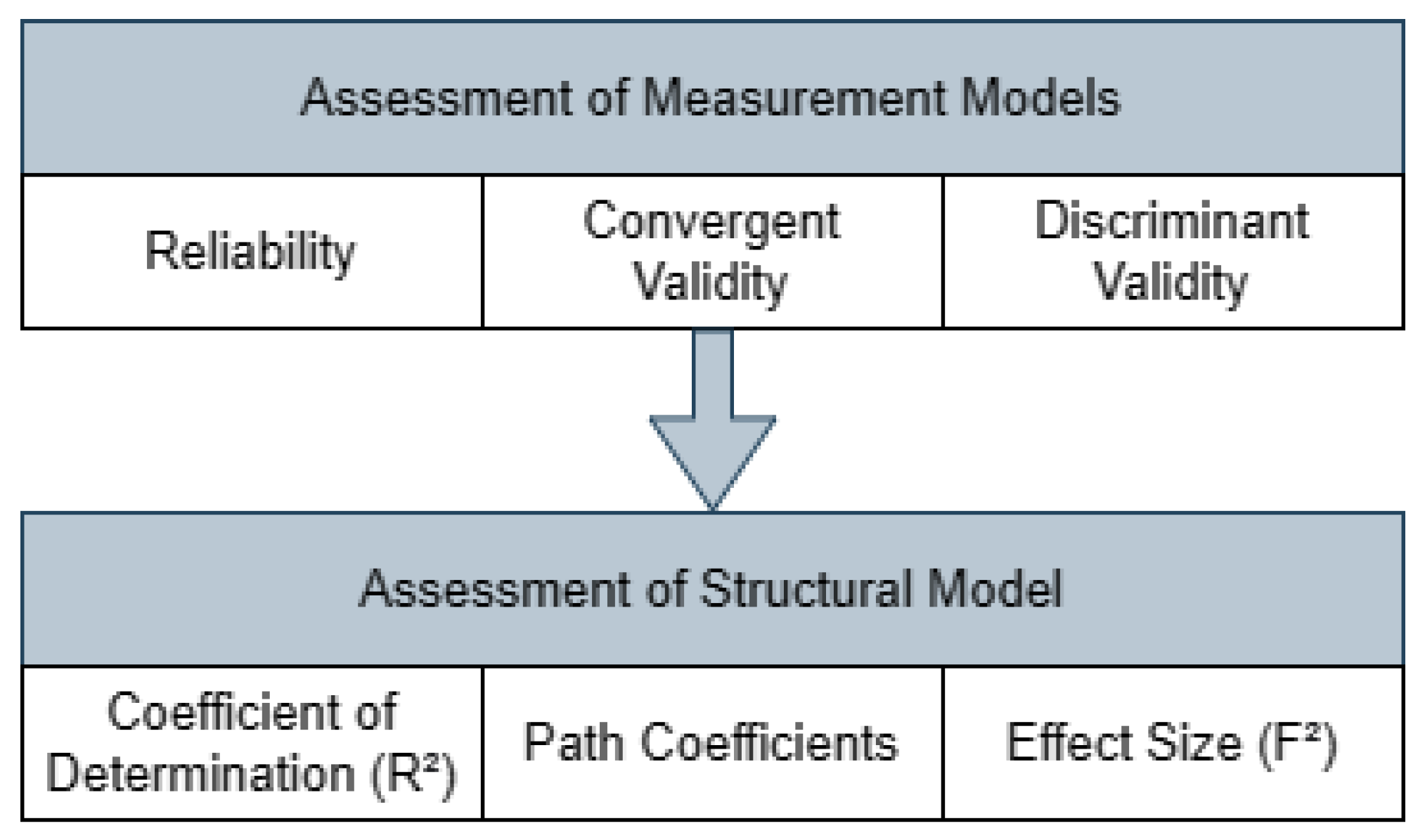
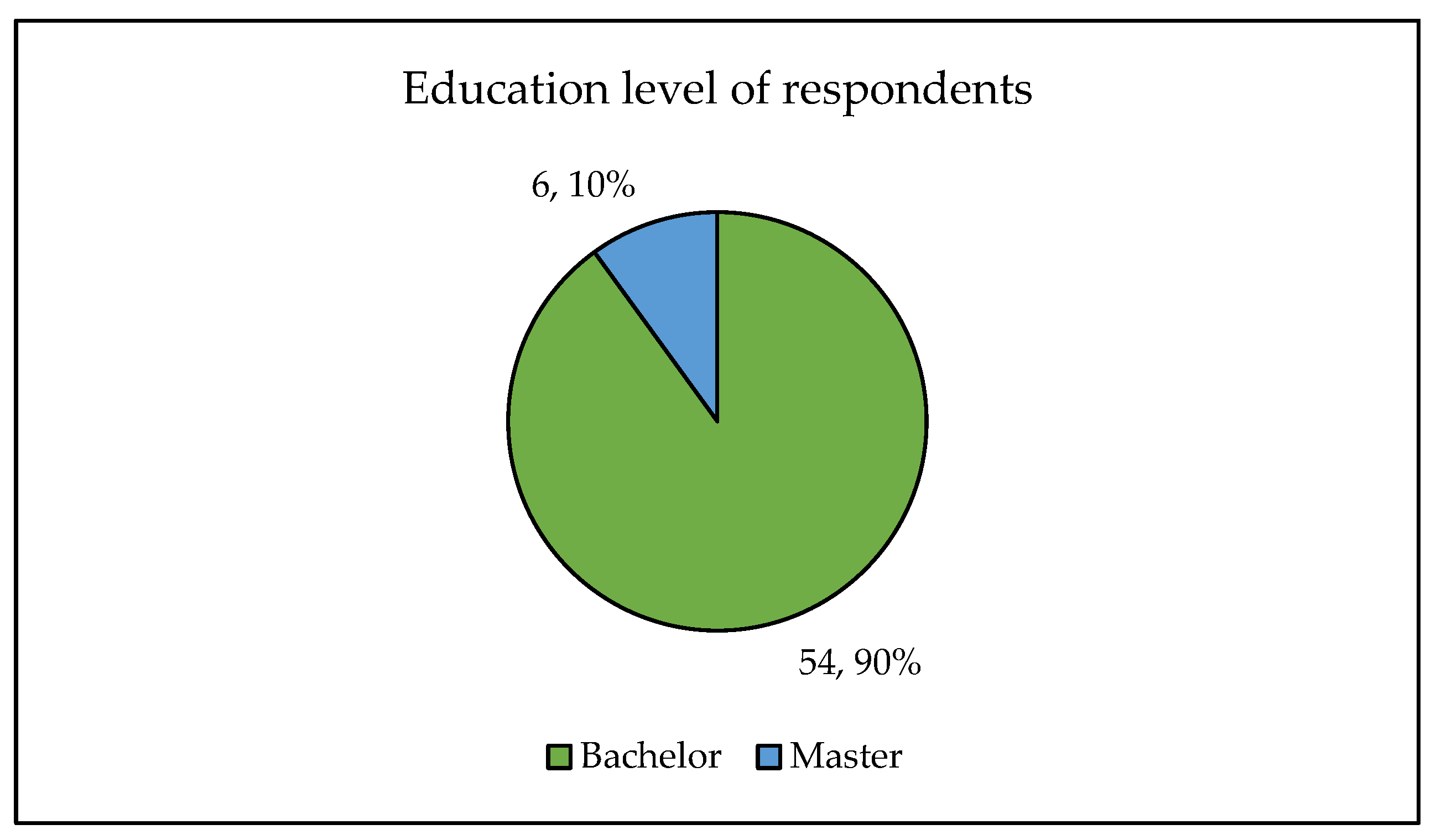
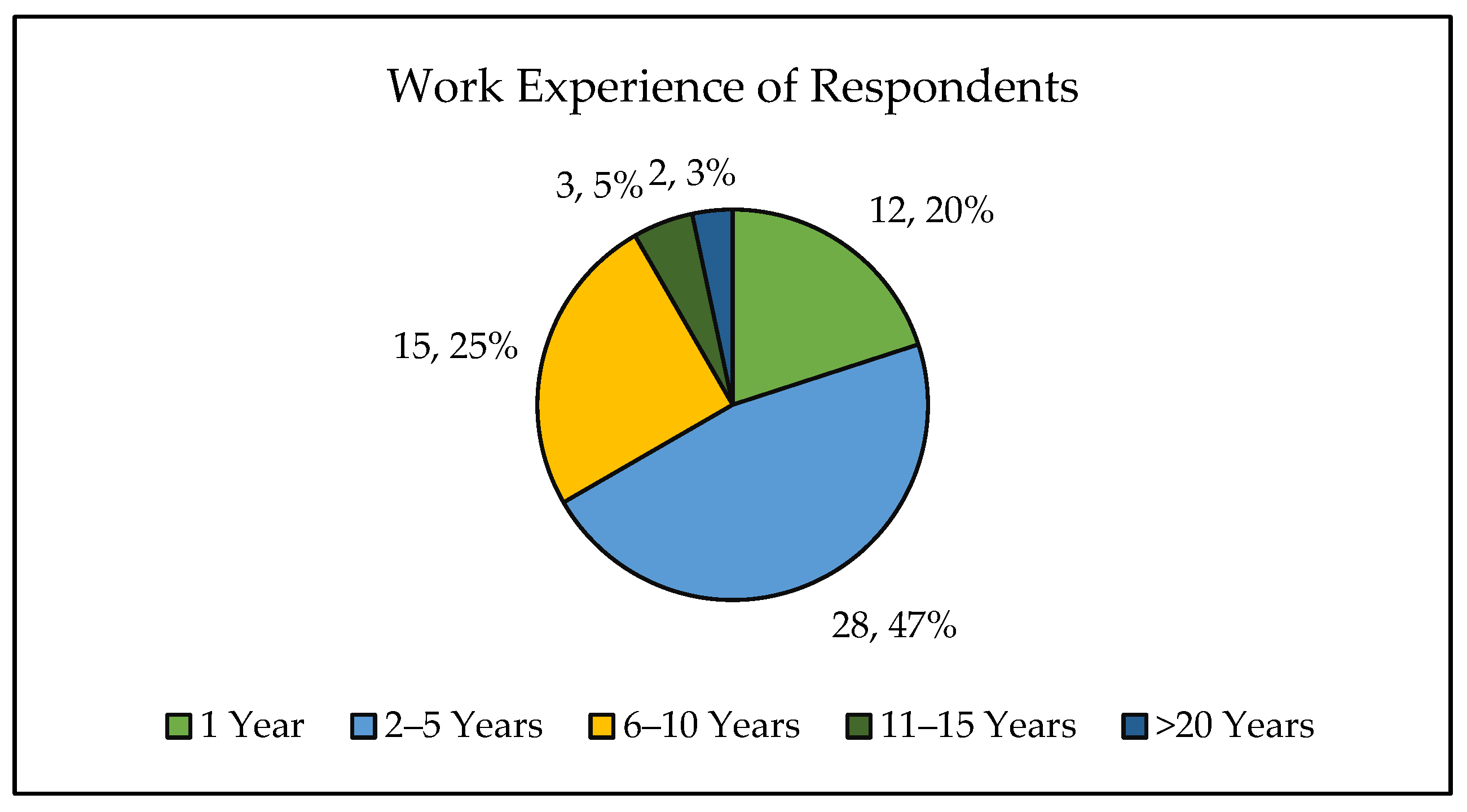
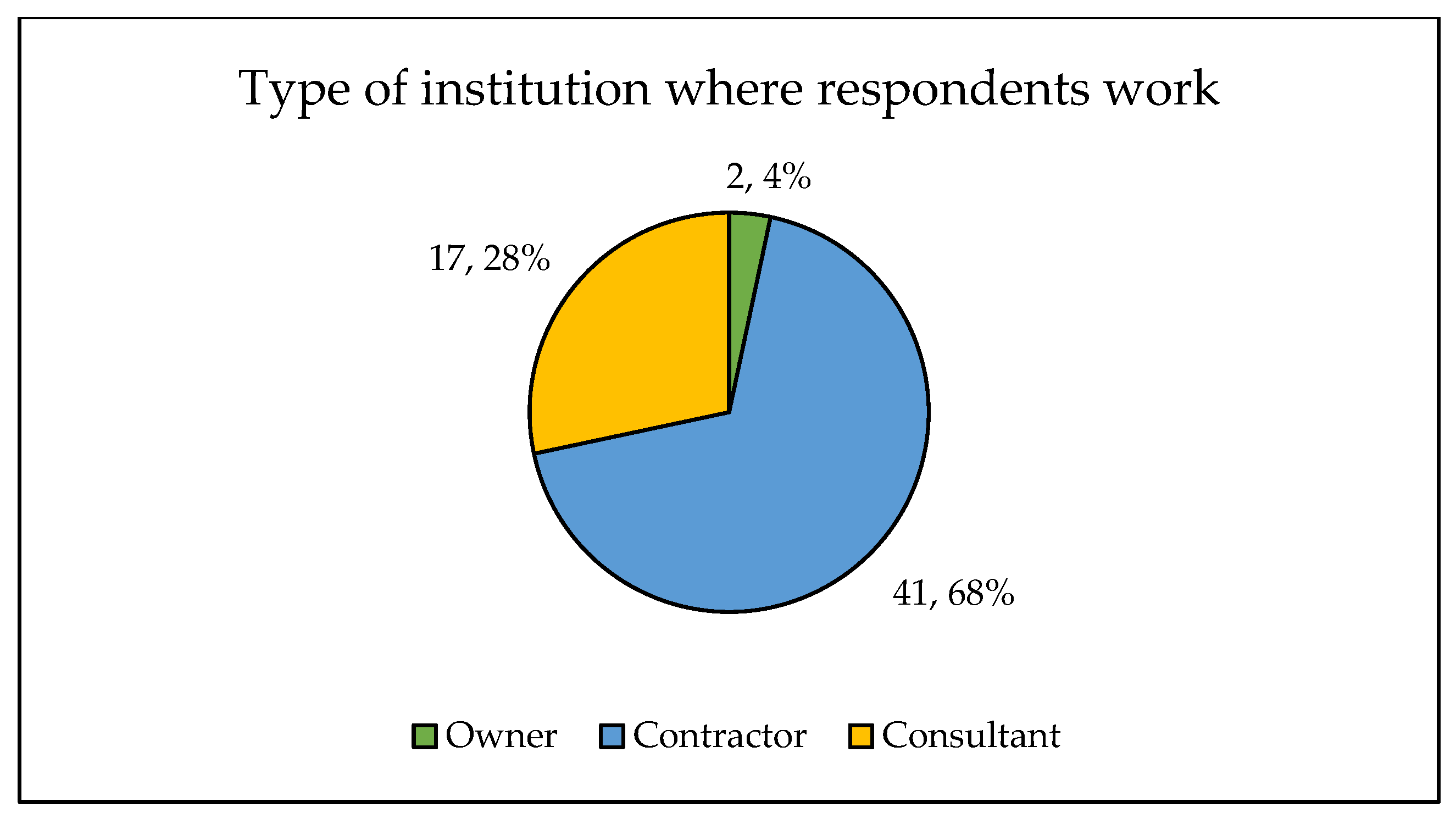
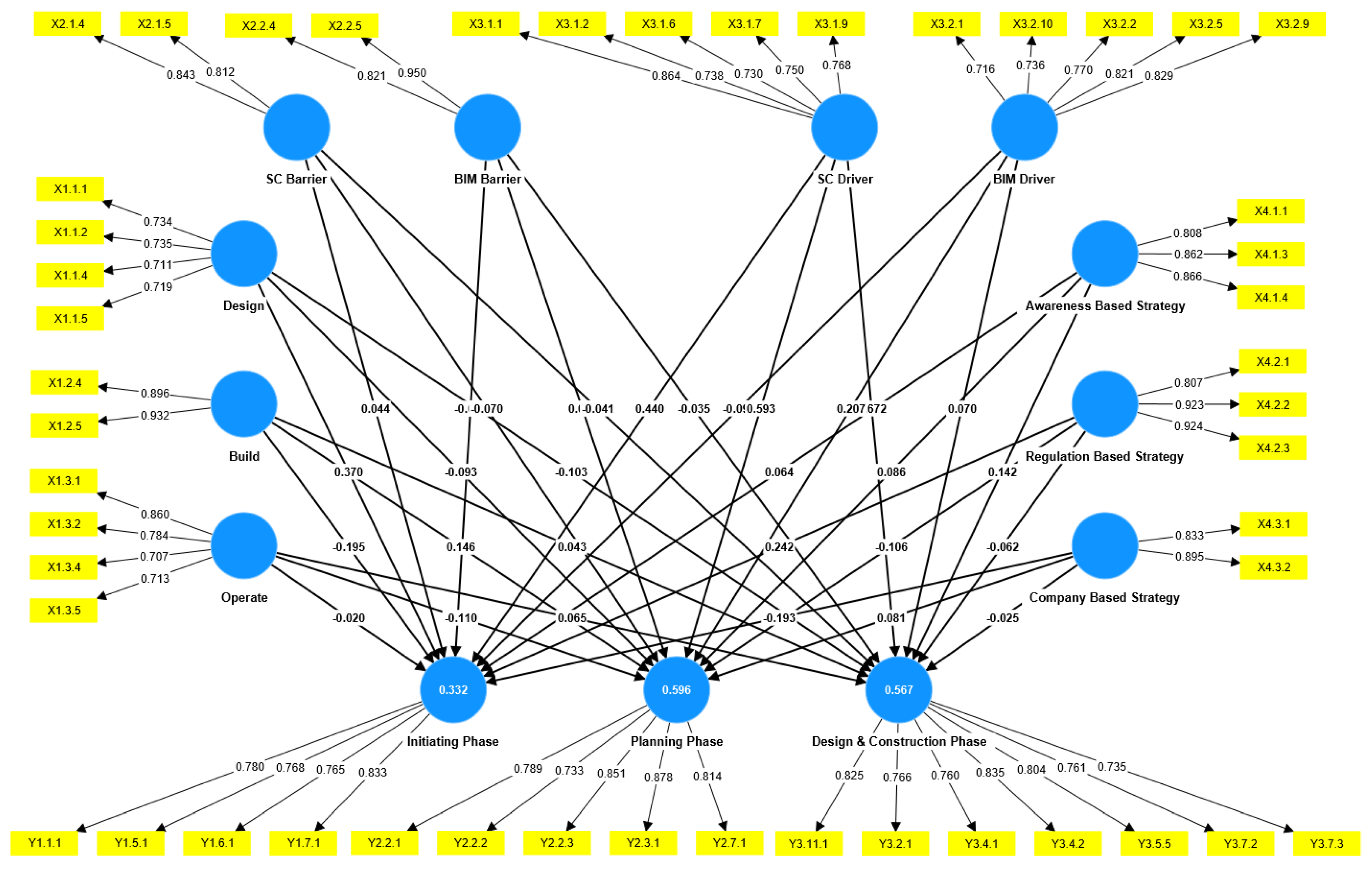
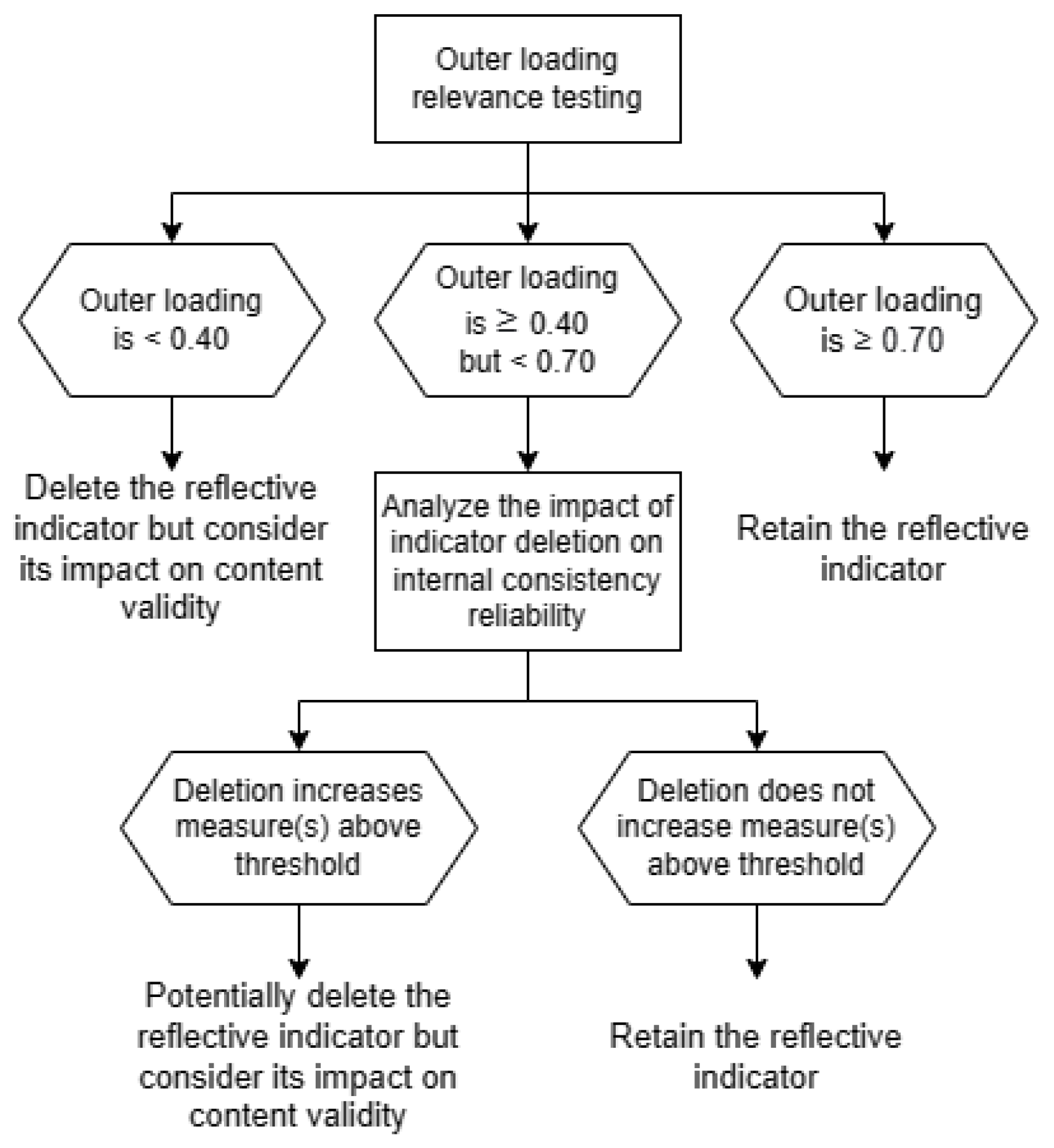
| Code | Variables | Code | Indicators | References |
|---|---|---|---|---|
| X1.1 | Design Phase | X1.1.1 | Building digitization | [38,39] |
| X1.1.2 | Integration between parties involved | [40,41] | ||
| X1.1.3 | Clash detection | [38,39,40,41] | ||
| X1.1.4 | Feasibility study | [41,42] | ||
| X1.1.5 | Energy efficiency analysis | [39,40,41] | ||
| X1.2 | Build Phase | X1.2.1 | Collaboration platform for stakeholders | [41,42] |
| X1.2.2 | Improve realization based on standards | [38,39,40,41,42] | ||
| X1.2.3 | Improve understanding of original design | [39,42] | ||
| X1.2.4 | Further development of 2D CAD | [40] | ||
| X1.2.5 | Work Efficiency | [39] | ||
| X1.3 | Operate Phase | X1.3.1 | Minimization of document errors | [41,42] |
| X1.3.2 | Become the main source of data | [42] | ||
| X1.3.3 | Become a database of asset information | [38,39,40,41,42] | ||
| X1.3.4 | Integration between different tools for each party | [38,39,40,41,42] | ||
| X1.3.5 | Asset performance analysis | [38,39,40,41,42] |
| Code | Variables | Code | Indicators | References |
|---|---|---|---|---|
| X2.1 | Sustainable Construction Barrier | X2.1.1 | Lack of training and education related to construction sustainable | [22,43,44,45] |
| X2.1.2 | Cost of implementation construction that tend to be high | |||
| X2.1.3 | Lack of experts in sustainable construction | |||
| X2.1.4 | Lack of demand from clients | |||
| X2.1.5 | Tendency not to adapt into sustainable construction | |||
| X2.2 | Building Information Modelling Barrier | X2.2.1 | BIM implementation temporarily reduces work efficiency due to the unwillingness of related parties to adapt | [22,43,44,45] |
| X2.2.2 | BIM implementation requires higher initial investment than conventional methods | |||
| X2.2.3 | BIM implementation not required by client | |||
| X2.2.4 | BIM implementation causes delays in the project due to lack of experience in the use of BIM by related parties | |||
| X2.2.5 | BIM implementation feels like additional work that must be done |
| Code | Variables | Code | Indicators | References |
|---|---|---|---|---|
| X3.1 | Sustainable Construction Driver | X3.1.1 | Improve energy efficiency | [43,44,45,46,47] |
| X3.1.2 | Improve resource conservation | |||
| X3.1.3 | Improve indoor environmental quality | |||
| X3.1.4 | Reduce construction waste | |||
| X3.1.5 | Reduce negative impact on the environment | |||
| X3.1.6 | Improve productivity | |||
| X3.1.7 | Reduce operation and maintenance costs after construction | |||
| X3.1.8 | Increase job opportunity | |||
| X3.1.9 | Improve health and safety | |||
| X3.1.10 | Improve Workers’ Welfare | |||
| X3.2 | Building Information Modelling Driver | X3.2.1 | Create a more effective design process | [43,44,45,46,47] |
| X3.2.2 | Reduce error and risk | |||
| X3.2.3 | Provide building life cycle data for operations and maintenance | |||
| X3.2.4 | Provide lessons learned from previous projects | |||
| X3.2.5 | Provide a basis for justifying a design based on standards and regulations | |||
| X3.2.6 | Centralize information in the database | |||
| X3.2.7 | Improve overall project cost efficiency | |||
| X3.2.8 | Improve visualization for stakeholders | |||
| X3.2.9 | Create more controlled project scheduling | |||
| X3.2.10 | Improved work safety on projects |
| Code | Variables | Code | Indicators | References |
|---|---|---|---|---|
| X4.1 | Awareness Based | X4.1.1 | Organize workshops, trainings, and events to increase awareness | [22,25,48,49] |
| X4.1.2 | Improve utilization of information technology | |||
| X4.1.3 | Conduct more research in the use of BIM for sustainable construction | |||
| X4.1.4 | Provide comprehensive support from every area | |||
| X4.2 | Regulation Based | X4.2.1 | More detailed standards and regulations in the use of BIM for sustainable construction | [22,25,48,49] |
| X4.2.2 | Create encouragement, support, and commitment from regulators to accommodate the implementation of BIM for sustainable construction | |||
| X4.2.3 | Development of operational standards and procedures in the application of BIM for sustainable construction | |||
| X4.3 | Company Based | X4.3.1 | Better information availability in the integration of BIM into sustainable construction | [22,25,48,49] |
| X4.3.2 | Prepare infrastructure (tools, software, hardware, etc.) to be able to apply BIM into sustainable construction | |||
| X4.3.3 | Recruit experts and specialists in BIM | |||
| X4.3.4 | Recruit experts and specialists in Sustainable Construction | |||
| X4.3.5 | Develop a dedicated team on the implementation of BIM into sustainable construction |
| Code | Variables | Code | Indicators |
|---|---|---|---|
| Y1 | Initiating phase | Y1.1.1 | The suitability of the location of the development plan in accordance with the standards |
| Y1.2.1 | Land suitability with function based on area master plan | ||
| Y1.3.1 | Availability of disaster risk mitigation plan | ||
| Y1.4.1 | Availability of local construction resource utilization plan | ||
| Y1.5.1 | Availability of development plans that are responsive to gender, people with disabilities, and marginalized people | ||
| Y1.6.1 | Availability of development plans that support regional economic development | ||
| Y1.7.1 | Availability of development plans in accordance with technical standards and utilization of environmentally friendly technology | ||
| Y2 | Planning Phase | Y2.1.1 | Availability of a community accessibility plan as part of the economic viability of sustainable construction |
| Y2.2.1 | Availability of detailed engineering design (DED) of sustainable construction buildings | ||
| Y2.2.2 | Availability of land for sustainable construction buildings | ||
| Y2.2.3 | Availability of environmental approvals | ||
| Y2.3.1 | Availability of feasibility study documents | ||
| Y2.4.1 | Provide responses to community aspirations | ||
| Y2.5.1 | Design compliance with principles that are responsive to gender, people with disabilities, and marginalized people | ||
| Y2.6.1 | Availability of natural resource utilization efficiency programs | ||
| Y2.7.1 | Availability of building technical requirements and criteria | ||
| Y3 | Construction phase | Y3.1.1 | Availability of health and safety management system |
| Y3.1.2 | The use of lightning rods according to standards | ||
| Y3.2.1 | Provide land use efficiency and minimize changes in land condition | ||
| Y3.3.1 | Provide energy conservation and efficiency | ||
| Y3.4.1 | Provide water utilization efficiency | ||
| Y3.4.2 | Construction of water catchment area | ||
| Y3.5.1 | The use of environmentally friendly construction materials | ||
| Y3.5.2 | The use of local construction materials | ||
| Y3.5.3 | Provide construction material use efficiency | ||
| Y3.5.4 | The use of recycled construction materials | ||
| Y3.5.5 | The use of prefabricated construction materials | ||
| Y3.6.1 | Maintain air water quality | ||
| Y3.6.2 | Provide noise reduction | ||
| Y3.7.1 | Provide solid and liquid waste management | ||
| Y3.7.2 | Construction of building drainage system | ||
| Y3.7.3 | Provide disaster adaptation | ||
| Y3.8.1 | Community involvement | ||
| Y3.9.1 | Construction of ender, disability, and marginalized responsive facility | ||
| Y3.10.1 | Construction of community access and interaction spaces | ||
| Y3.10.2 | Construction of public transport user access and facilities | ||
| Y3.10.3 | Construction of pedestrian and/or cycling access and facilities | ||
| Y3.11.1 | Design compliance with building construction technical requirements and criteria |
| Code | Variable | Code | Indicator | Outer Loading | Average Variance Extracted | Composite Reliability | Cronbach’s Alpha | R2 | Q2 |
|---|---|---|---|---|---|---|---|---|---|
| X1.1 | Design Phase | X1.1.1 | Building digitization | 0.734 | 0.525 | 0.700 | 0.701 | - | - |
| X1.1.2 | Integration between parties involved | 0.735 | - | ||||||
| X1.1.4 | Feasibility Study | 0.711 | - | ||||||
| X1.1.5 | Energy efficiency analysis | 0.719 | - | ||||||
| X1.2 | Build Phase | X1.2.4 | Further development of 2D CAD | 0.896 | 0.837 | 0.830 | 0.807 | - | - |
| X1.2.5 | Work Efficiency | 0.932 | - | ||||||
| X1.3 | Operate Phase | X1.3.1 | Minimization of document errors | 0.860 | 0.590 | 0.809 | 0.781 | - | - |
| X1.3.2 | Become the main source of data | 0.784 | - | ||||||
| X1.3.4 | Integration between different tools for each party | 0.707 | - | ||||||
| X1.3.5 | Asset performance analysis | 0.713 | - | ||||||
| X2.1 | Sustainable Construction Barrier | X2.1.4 | Lack of demand from clients | 0.843 | 0.685 | 0.785 | 0.741 | - | - |
| X2.1.5 | Tendency not to adapt into sustainable construction | 0.812 | - | ||||||
| X2.2 | Building Information Modelling Barrier | X2.2.4 | BIM implementation causes delays in the project due to lack of experience in the use of BIM by related parties | 0.821 | 0.788 | 0.951 | 0.752 | - | - |
| X2.2.5 | BIM implementation feels like additional work that must be done | 0.950 | - | ||||||
| X3.1 | Sustainable Construction Driver | X3.1.1 | Improve energy efficiency | 0.864 | 0.595 | 0.834 | 0.83 | - | - |
| X3.1.2 | Improve resource conservation | 0.738 | - | ||||||
| X3.1.6 | Improve productivity | 0.730 | - | ||||||
| X3.1.7 | Reduce operation and maintenance costs after construction | 0.750 | - | ||||||
| X3.1.9 | Improve health and safety | 0.768 | - | ||||||
| X3.2 | Building Information Modelling Driver | X3.2.1 | Create a more effective design process | 0.716 | 0.602 | 0.901 | 0.84 | - | - |
| X3.2.2 | Reduce error and risk | 0.736 | - | ||||||
| X3.2.5 | Provide a basis for justifying a design based on standards and regulations | 0.770 | - | ||||||
| X3.2.9 | Create more controlled project scheduling | 0.821 | - | ||||||
| X3.2.10 | Improved work safety on projects | 0.829 | - | ||||||
| X4.1 | Awareness-Based | X4.1.1 | Organize workshops, trainings, and events to increase awareness | 0.808 | 0.715 | 0.801 | 0.8 | - | - |
| X4.1.3 | Conduct more research in the use of BIM for sustainable construction | 0.862 | - | ||||||
| X4.1.4 | Provide comprehensive support from every area | 0.866 | - | ||||||
| X4.2 | Regulation-Based | X4.2.1 | More detailed standards and regulations in the use of BIM for sustainable construction | 0.807 | 0.786 | 0.922 | 0.867 | - | - |
| X4.2.2 | Create encouragement, support, and commitment from regulators to accommodate the implementation of BIM for sustainable construction | 0.923 | - | ||||||
| X4.2.3 | Development of operational standards and procedures in the application of BIM for sustainable construction | 0.924 | - | ||||||
| X4.3 | Company-Based | X4.3.1 | Better information availability in the integration of BIM into sustainable construction | 0.833 | 0.747 | 0.785 | 0.764 | - | - |
| X4.3.2 | Prepare infrastructure (tools, software, hardware, etc.) to be able to apply BIM into sustainable construction | 0.895 | - | ||||||
| Y1 | Initiating Phase | Y1.1.1 | The suitability of the location of the development plan in accordance with the standards | 0.780 | 0.620 | 0.796 | 0.795 | 0.332 | 0.13 |
| Y1.5.1 | Availability of development plans that are responsive to gender, people with disabilities, and marginalized people | 0.768 | 0.074 | ||||||
| Y1.6.1 | Availability of development plans that support regional economic development | 0.765 | 0.016 | ||||||
| Y1.7.1 | Availability of development plans in accordance with technical standards and utilization of environmentally friendly technology | 0.833 | 0.105 | ||||||
| Y2 | Planning Phase | Y2.2.1 | Availability of detailed engineering design (DED) of sustainable construction buildings | 0.789 | 0.663 | 0.888 | 0.873 | 0.596 | 0.123 |
| Y2.2.2 | Availability of land for sustainable construction buildings | 0.733 | 0.022 | ||||||
| Y2.2.3 | Availability of environmental approvals | 0.851 | 0.294 | ||||||
| Y2.3.1 | Availability of feasibility study documents | 0.878 | 0.234 | ||||||
| Y2.7.1 | Availability of building technical requirements and criteria | 0.814 | 0.298 | ||||||
| Y3 | Construction Phase | Y3.2.1 | Provide land use efficiency and minimize changes in land condition | 0.825 | 0.616 | 0.896 | 0.895 | 0.567 | 0.21 |
| Y3.4.1 | Provide water utilization efficiency | 0.766 | 0.129 | ||||||
| Y3.4.2 | Construction of water catchment area | 0.760 | 0.107 | ||||||
| Y3.5.5 | The use of prefabricated construction materials | 0.835 | 0.158 | ||||||
| Y3.7.2 | Construction of building drainage system | 0.804 | 0.172 | ||||||
| Y3.7.3 | Provide disaster adaptation | 0.761 | 0.209 | ||||||
| Y3.11.1 | Design compliance with building construction technical requirements and criteria | 0.735 | 0.223 |
| R2 Value | Category |
|---|---|
| <0.25 | Very Weak |
| 0.25 ≤ R2 < 0.50 | Weak |
| 0.50 ≤ R2 < 0.75 | Moderate |
| 0.75 ≤ R2 | Substantial |
| Parameter | Value |
|---|---|
| SRMR | 0.083 |
| RMS Theta | 0.089 |
| Variable | Initiating Phase | Planning Phase | Construction Phase |
|---|---|---|---|
| BIM Design Function | 0.370 | −0.093 | −0.103 |
| BIM Build Function | −0.195 | 0.146 | 0.043 |
| BIM Operate Function | −0.020 | −0.110 | 0.065 |
| SC Barrier | 0.044 | −0.070 | −0.041 |
| BIM Barrier | −0.021 | 0.041 | −0.035 |
| SC Driver | 0.440 | 0.593 | 0.672 |
| BIM Driver | −0.097 | 0.207 | 0.070 |
| Awareness Based Strategy | 0.064 | 0.086 | 0.142 |
| Regulation Based Strategy | 0.242 | −0.106 | −0.062 |
| Company Based Strategy | −0.193 | 0.081 | −0.025 |
| Code | Variable | Code | Indicator | RII |
|---|---|---|---|---|
| X1.1 | BIM Design Function | X1.1.1 | Building digitization | 0.880 |
| X1.2 | BIM Build Function | X1.2.4 | Further development of 2D CAD | 0.923 |
| X1.3 | BIM Operate Function | X1.3.4 | Integration between different tools for each party | 0.883 |
| X2.1 | SC Barrier | X2.1.2 | Cost of implementation construction that tend to be high | 0.830 |
| X2.2 | BIM Barrier | X2.2.2 | BIM implementation requires higher initial investment than conventional methods | 0.857 |
| X3.1 | SC Driver | X3.1.4 | Reduce construction waste | 0.847 |
| X3.2 | BIM Driver | X3.2.8 | Improve visualization for stakeholders | 0.913 |
| X4.1 | Awareness Strategy | X.4.1.3 | Conduct more research in the use of BIM for sustainable construction | 0.903 |
| X4.2 | Regulation Strategy | X4.2.2 | Create encouragement, support, and commitment from regulators to accommodate the implementation of BIM for sustainable construction | 0.930 |
| X4.3 | Company Strategy | X4.3.2 | Prepare infrastructure (tools, software, hardware, etc.) to be able to apply BIM into sustainable construction | 0.890 |
| Variable X (BIM) | Relevant Indicator | Its Effect on Variable Y |
|---|---|---|
| (BIM) | (Based on RII) | (Sustainable Construction Criteria) |
| Design Function | Building digitization | Initiating Phase |
| Build Function | Further development of 2D CAD | Planning Phase |
| Construction phase | ||
| Operate Function | Integration between different tools for each party | Construction phase |
| SC Barrier | Cost of implementation construction tend to be high | Initiating Phase |
| BIM Barrier | BIM implementation requires higher initial investment than conventional methods | Planning Phase |
| SC Driver | Reduce construction waste | Initiating Phase |
| Planning Phase | ||
| Construction phase | ||
| BIM Driver | Improve visualization for stakeholders | Planning Phase |
| Construction phase | ||
| Awareness Strategy | Conduct more research in the use of BIM for sustainable construction | Initiating Phase |
| Planning Phase | ||
| Construction phase | ||
| Regulation Strategy | Create encouragement, support, and commitment from regulators to accommodate the implementation of BIM for sustainable construction | Initiating Phase |
| Company Strategy | Prepare infrastructure (tools, software, hardware, etc.) to be able to apply BIM into sustainable construction | Planning Phase |
Disclaimer/Publisher’s Note: The statements, opinions and data contained in all publications are solely those of the individual author(s) and contributor(s) and not of MDPI and/or the editor(s). MDPI and/or the editor(s) disclaim responsibility for any injury to people or property resulting from any ideas, methods, instructions or products referred to in the content. |
© 2023 by the authors. Licensee MDPI, Basel, Switzerland. This article is an open access article distributed under the terms and conditions of the Creative Commons Attribution (CC BY) license (https://creativecommons.org/licenses/by/4.0/).
Share and Cite
Murti, C.K.; Muslim, F. Relationship between Functions, Drivers, Barriers, and Strategies of Building Information Modelling (BIM) and Sustainable Construction Criteria: Indonesia Construction Industry. Sustainability 2023, 15, 5526. https://doi.org/10.3390/su15065526
Murti CK, Muslim F. Relationship between Functions, Drivers, Barriers, and Strategies of Building Information Modelling (BIM) and Sustainable Construction Criteria: Indonesia Construction Industry. Sustainability. 2023; 15(6):5526. https://doi.org/10.3390/su15065526
Chicago/Turabian StyleMurti, Cakraningrat Kencana, and Fadhilah Muslim. 2023. "Relationship between Functions, Drivers, Barriers, and Strategies of Building Information Modelling (BIM) and Sustainable Construction Criteria: Indonesia Construction Industry" Sustainability 15, no. 6: 5526. https://doi.org/10.3390/su15065526





